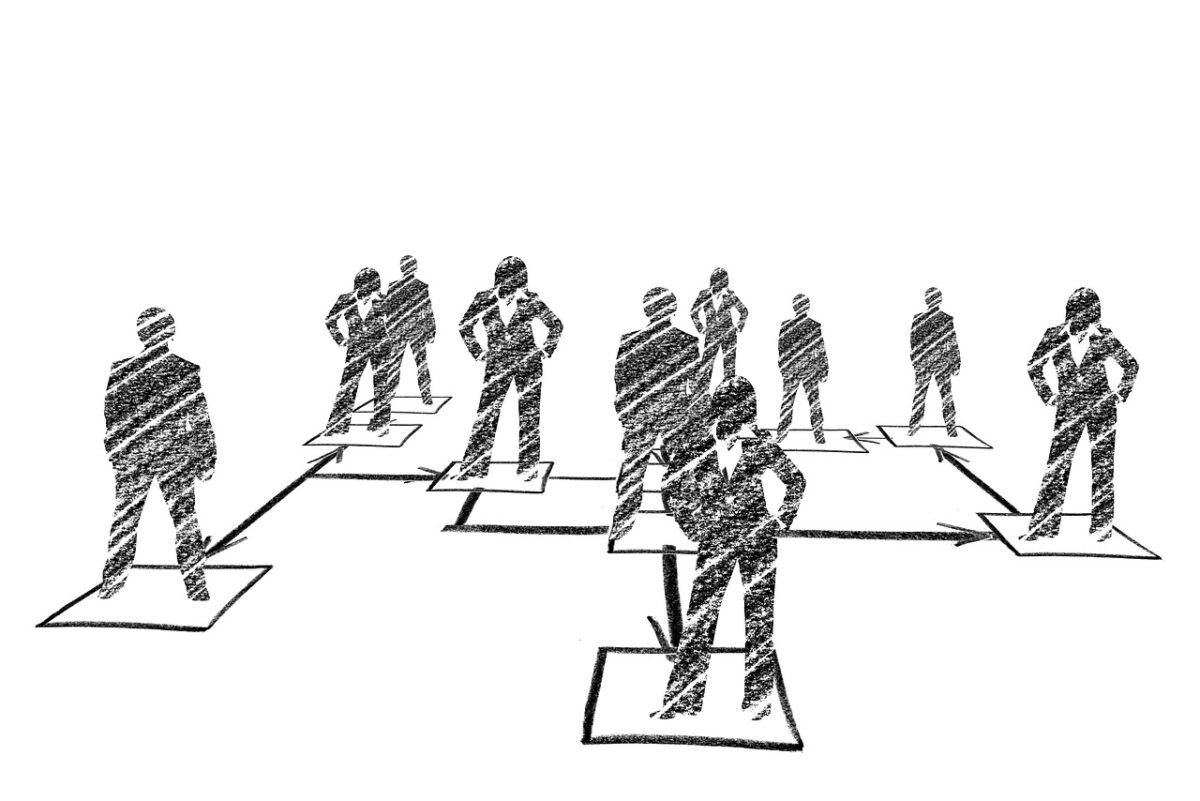How Often Should You Update Job Descriptions In The UK?

In the dynamic landscape of today’s workforce, maintaining up-to-date job descriptions is more crucial than ever for organisations aiming to stay competitive and compliant. This blog explores the importance of regularly refreshing job descriptions, detailing the frequency and circumstances under which updates should be made.
We will discuss the substantial benefits of keeping these documents current, provide practical advice, and introduce essential tools and resources, such as blank job description templates, a library of pre-written job descriptions, and innovative recruitment packages, to streamline and simplify the update process. Whether you’re a seasoned HR professional or a business leader looking to refine your organisational structure, this guide will equip you with the knowledge and tools to optimise your job descriptions effectively.
Quick Links:
- The Role Of Job Descriptions In Modern HR
- Benefits Of Regularly Updating Job Descriptions
- How Often Should You Update?
- Steps To Update Job Descriptions Effectively
- Challenges In Updating Job Descriptions
- Tools And Resources To Simplify Job Description Updates
- Updating Job Descriptions FAQs
Highlights And Key Takeaways:
- Regularly updating job descriptions is an essential HR process that enhances the recruitment process, performance management, legal compliance, and the business’s adaptability to industry changes.
- Several factors influence how often updates should occur, ranging from routine reviews to responding to significant organisational changes or needing to place a job advert.
- Updating job descriptions can be complex, but utilising the right tools and resources can significantly streamline the process.
The Role Of Job Descriptions In Modern HR

Job Description Meaning: Job descriptions are foundational elements within Human Resources Management, serving as a cornerstone for numerous HR activities. They typically detail the job title, key responsibilities, necessary qualifications, and specific skills required for a position. Moreover, they outline the daily tasks and education requirements, ensuring that all potential candidates or current employees understand their roles clearly. A comprehensive and accurate job description will effectively delineate the scope of job functions, highlighting both the hard and soft skills needed to succeed in the role.
The significance of job descriptions extends beyond just outlining what a job entails. They are crucial in aligning the responsibilities of each position with the broader business objectives and HR strategies. This alignment ensures that every role supports the overarching goals of the organisation, facilitating optimal performance and strategic coherence. For instance, by accurately defining responsibilities and daily tasks, organisations can better align their workforce with their strategic plans, promoting efficiency and effectiveness across all levels of operation.
Furthermore, job descriptions play a vital role in talent management, from recruitment to performance appraisal and career development. An accurate job description ensures that HR departments recruit candidates who are not only qualified but also a good fit for the company culture and specific job demands. It serves as a critical reference point in performance evaluations, helping managers assess employee performance against clearly defined expectations.
For more detailed guidance on what to include in a job description to maximise its effectiveness within your HR framework, refer to our blog What To Include In A Job Description. This resource provides further insights into crafting detailed and functional job descriptions that support both operational needs and strategic objectives, ensuring that your organisation remains agile and well-coordinated.
Benefits Of Regularly Updating Job Descriptions

Regularly updating job descriptions is an essential HR process that brings numerous benefits to an organisation. It enhances the recruitment process, performance management, legal compliance, and the business’s adaptability to industry changes:
- Recruitment Readiness: Keeping job descriptions up to date ensures that job postings are accurate, reflecting the current needs and requirements of the role. This accuracy is crucial in attracting the right candidates, thus streamlining the recruiting process and improving the quality of new hires. An up-to-date role description ensures that all stakeholders have clear expectations from the outset, reducing the likelihood of miscommunication and helping to secure the best fit for the role.
- Performance Management: Regular updates to job descriptions provide a clear and current basis for employee evaluations. Employers can more accurately assess individual performance against these criteria by outlining incremental changes in role requirements or objectives. This clarity supports fair and constructive appraisal discussions, fostering professional growth and alignment with company goals.
- Compliance and Legal Protection: Updated job descriptions are vital in keeping the organisation compliant with current employment laws. This compliance exercise can significantly mitigate the risk of legal claims about misrepresenting job duties or discriminatory hiring practices. Employers are encouraged to seek legal advice when making substantial changes to job descriptions to ensure they meet legal standards and protect the company and its employees.
- Adaptability: In a rapidly changing business environment, adapting quickly to new challenges is invaluable. Regularly revising job descriptions allows a company to respond swiftly to industry changes, technological advancements, and evolving market demands. This adaptability ensures that the workforce always aligns with current company strategies and industry standards.
For more insights into crafting effective job descriptions and understanding their role in contractual agreements within the UK, consider exploring The Hiring Blueprint: UK Contract of Employment Template. This blog provides detailed guidance on aligning job descriptions with contractual terms to enhance recruiting efforts and contractual compliance, strengthening your HR foundation.
How Often Should You Update?

Determining the frequency of updating job descriptions is crucial for maintaining an efficient and compliant workplace. Several factors influence how often these updates should occur, ranging from routine reviews to responding to significant organisational changes:
- Annual Reviews: It makes sense to align the review of job descriptions with annual performance reviews. This regular check-in provides a natural opportunity to assess whether the roles align with what is required and if employees’ responsibilities have evolved. This can also be a significant milestone for introducing more frequent updates if the employer makes note of substantial shifts in role dynamics or if an enhanced skill set has become essential due to evolving departmental goals.
- Trigger Events: Certain events should prompt immediate updates to job descriptions. These include significant organisational changes like reorganisation, the implementation of new technology, or shifts in market demands. Similarly, the creation of new jobs, changes in team structure, or when planning for future leadership through succession planning are all critical times to revise job descriptions. Additional scenarios, such as an employee taking sabbatical leave or paternity leave, can also necessitate updates, ensuring that roles and responsibilities are covered and clearly defined during their absence. For guidance on handling these situations, blogs like How To Handle Your Employee Going On Sabbatical Leave: Sabbatical Leave Template and What To Do When A Key Employee Hands In Their Resignation Letter: Resignation Acceptance Letter Templateprovide valuable templates and advice.
- Regulatory Changes: New laws and regulations can immediately affect job requirements and compliance standards. Staying up to date with these changes is essential to ensure the organisation remains within legal boundaries and avoids potential claims. HR must monitor these developments closely and adjust job descriptions to reflect new legal requirements.
In essence, while annual updates are good practice, the need for more work and training in updating job descriptions can vary depending on the dynamics of the new job role, team, or department changes. Recognising when more frequent updates are needed will help maintain clarity and efficiency, ensuring that all job descriptions accurately reflect the organisation’s current state and its goals.
Steps To Update Job Descriptions Effectively

Updating job descriptions is a critical task that ensures roles remain aligned with the organisation’s current needs and legal standards. The process involves multiple steps, from gathering information to implementing changes effectively:
- Gather Information: The first step in revising a job description is to gather accurate and comprehensive information. Consult with current job holders and managers for detailed feedback on the existing description. This step is crucial to understanding the day-to-day tasks and responsibilities that may have evolved since the last update. It’s important to capture any new tasks or changes in responsibilities expected of the person in the role. For guidance on starting this process, refer to What Is The First Step In Crafting An Effective Job Description?which highlights the importance of this initial information-gathering phase.
- Draft and Review: Once the information is gathered, update the job description draft. This revised document should reflect the changes and updates discussed and gathered from the initial consultations. Working closely with the HR department is crucial to ensure all updates adhere to current HR processes and legal frameworks. Reviewing the document with legal departments is essential to mitigate potential legal issues. Our blog A Job Description A – Z Guide: UK Job Description Writing Guide provides a comprehensive overview of how to document these updates effectively.
- Implement Changes: After finalising and reviewing the draft, the next step is to implement these changes. This involves officially rolling out the updated job description and communicating these changes to all stakeholders, including the team, department, and any relevant managers. Deciding how to communicate these changes is as important as the updates themselves, as clear communication ensures that everyone understands their roles and expectations moving forward.
Following these three steps ensures that job descriptions are kept up to date and reflect the actual responsibilities and tasks required by the role. This clarity is vital for maintaining organisational efficiency and compliance and ensuring that all team members are on the same page regarding their roles and contributions to the company’s goals.
Challenges In Updating Job Descriptions

Updating job descriptions is a vital HR process, but it comes with challenges. Effectively addressing these issues can ensure the process improves role clarity and compliance rather than creating new problems:
- Overcoming Resistance from Management and Employees: One of the primary challenges is resistance from both management and employees. Managers may be reluctant to change if they believe the current descriptions suffice or fear the upheaval that changes could bring. Employees might resist if they perceive the updated descriptions as a way to increase workload or change their role fundamentally, potentially leading to constructive dismissal claims. Effective communication is key here, ensuring that all parties understand that updates are intended to reflect real job needs accurately and are not just a bureaucratic exercise. Highlighting the benefits, such as the potential for career development and better role clarity, can help gain their support.
- Ensuring that Changes Are Realistic and Reflect Actual Job Needs: Updates to job descriptions must be realistic and mirror the actual requirements and new skills needed for the role. Unrealistic job expectations can lead to employee dissatisfaction and even legal implications if the changes lead to untenable working conditions. Regular consultation with those currently in the role and their managers can help keep revisions grounded in reality.
- Maintaining Consistency Across the Organisation: Ensuring consistency in updating job descriptions across different departments can be challenging. Discrepancies in role definitions and expectations can lead to inefficiencies and a lack of uniformity, which might affect the organisation’s ability to attract and retain top talent. This requires a structured approach to updates, typically overseen by HR, to ensure that all job descriptions adhere to the same standards and reflect the organisational needs uniformly.
Handling these challenges effectively requires careful planning and consideration of various aspects of HR management. For practical steps on tackling these updates efficiently over a short period, refer to How To Upgrade Your Job Descriptions This Weekend. This blog offers valuable insights and tips on swiftly addressing potential problems, including approaching sensitive changes and ensuring alignment with broader HR strategies and employment tribunal standards.
Tools And Resources To Simplify Job Description Updates

Updating job descriptions can be complex, but utilising the right tools and resources can significantly streamline the process. Here are some key aids that can help any HR department efficiently manage and update their job descriptions:
- Blank Job Description Template: A blank job description template is invaluable for ensuring consistency and completeness in drafting job descriptions. This template acts as a structured guide, providing a clear framework that covers all necessary sections, such as job title, key responsibilities, required qualifications, and skills. By starting with a standard template, HR teams can ensure that no critical details are overlooked and that all job descriptions follow a uniform format, making creation and updates faster and more efficient.
- Library of Pre-Written Job Descriptions: A library of pre-written job descriptions can be extremely beneficial for common roles within various industries. These documents serve as comprehensive starting points, which can be customised to fit specific organisational needs. They save time and help maintain a high standard of quality and consistency across job descriptions. This resource is particularly useful for quickly drafting descriptions for new roles or revising existing ones to meet changing job requirements.
- Blank Job Advert Template: Alongside job description templates, a blank job advert template can also aid in the recruitment process. This template ensures that all job adverts are compelling and aligned with the updated job descriptions. It helps maintain a consistent voice and format across all recruitment advertising, ensuring potential candidates receive clear and accurate information about the roles.
- Flat Fee Recruitment Packages for Job Board Advertising: To further support the recruitment process, flat fee recruitment packages offer a cost-effective way to advertise job openings. Our packages allow employers to post job adverts on multiple leading job boards at a fixed price, ensuring wide visibility and attracting diverse candidates. This tool is particularly useful for companies looking to streamline their recruitment efforts and reduce associated costs.
Utilising these tools not only simplifies the process of updating and managing job descriptions but also enhances the overall effectiveness of recruitment and HR management. By integrating these resources into their HR processes, organisations can ensure that they attract the right talent while maintaining efficiency and compliance.
Updating Job Descriptions FAQs
Here we answers the questions of HR professionals, employers, and employees on job description updates:
Job descriptions should ideally be reviewed and updated regularly to ensure they accurately reflect the current duties and requirements of the role. Many organisations evaluate job descriptions annually, coinciding with performance review cycles. However, it’s prudent to update a job description whenever significant changes in responsibilities or skills occur, ensuring alignment with organisational goals and operational needs.
In the UK, no specific legal requirements dictate that job descriptions must be provided or maintained. However, they often form part of the contractual agreement between an employer and an employee. Hence, they are crucial for clarity on role expectations. Job descriptions can also serve as a reference in legal matters, such as disputes regarding role misrepresentation or discrimination, making them important documents for both parties.
An employer can propose changes to a job description, but if these changes substantially alter the terms of employment, they typically require the employee’s consent. Minor adjustments that don’t significantly change the nature of the job may not need formal agreement; however, it’s good practice to discuss any changes with the employee to maintain transparency and morale.
The extent to which a job description can be changed depends on the terms of the employee’s contract and the nature of the changes. Significant changes that alter the fundamental terms of the contract (such as role, responsibilities, location, or hours) usually require the employee’s consent. If an employee does not agree to substantial changes, this could be seen as a breach of contract. Employers are advised to handle such modifications carefully and preferably with legal consultation to avoid disputes and ensure compliance with employment law.



